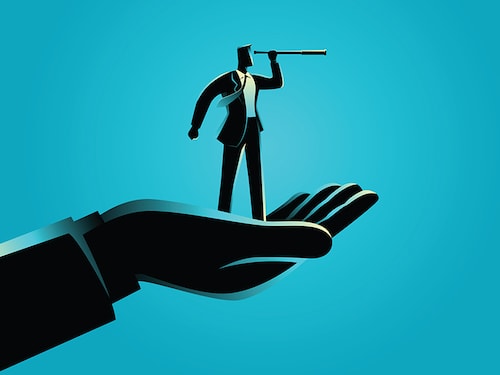Four predictions for marketing in the 2020s
Marketing will be disrupted with augmented reality, product placement and far less external agency support. Here's how


The future looks automated, analyst heavy and with generous servings of environment friendly projects. While award-winning ad campaigns will stem from across the pyramid, category leaders will be known for their production scale above all. Multi National Corporations (MNCs) would choose to celebrate the new cultures they penetrate—like Uniqlo India launching with a kurta collection, rather than just force feeding their own. Artificial Intelligence will takeover a lot of manual labour, demanding cerebral work to be more imaginative. What we know as auto bots today, will transform into C-3POs of tomorrow. While inventive startups will grow each year, a clear duopoly across most categories looks inevitable. The possibilities are profound, certainly evolving the marketing, strategy and branding we know of today. Here’s some insight into what you can expect:Chief data scientist will work parallel to chief executive officer
Sorry, branding and sales heads. The person who is actually mapping the whole business—from customers’ data mining to brand’s machine learning is going to set the future tone of your company. The force will be strong enough to foresee Baby Yoda will be the meme of 2019 and designing the whole marketing campaign of The Mandalorian around it, at the production stage itself. The collaborative machine and man analysis after million cycles of intuitive learning will not only monitor key business risks but also the unforeseen opportunities to tap in the coming years. Imagine what Uber is doing with self-driven cars today; tomorrow, such ingenious technological leaps will be yearly. In six years, data science will be nuanced enough to predict a 93 percent possibility of an un-smartphone call-only mobile designed in Japan, sold for a $1,000, becoming a Unicorn in 14 months. This kind of precision is based on what kind of content, vacation and events the audience has been experiencing for a year. Of course, it won’t be a fair field anymore when the crème de la crème knows the deepest desires of the users and creates products to cater that sweet spot, while the rest burn the already limited money in hit and trials like old times. In the end all, of this research will ultimately improve the consumer experiences. And for this, they will not only be handsomely paid (dare I say before 2030 as much as COO and CFO if not comfortably more) but also be the breakthrough innovators this past decade missed.
Augmented reality will be the basic marketing reality
Move over, social media filters. The next decade will change the way product is marketed, trialed and lured by brands. Digital showrooms shall be like a cafe on every corner and retail will amp up the technology to style you virtually. Select the occasion, scale of event, and the augmented reality (AR) machines will find out the top 20 preferences from across its inventory for you to try. Content creators will collaborate sooner than later with envious production value for branded AR—for instance, imagine you are a bride in a Vera Wang showroom, who can see herself walking down the aisle as John Legend plays the piano, smiling at you. In the next 10 years, expect most marketing material to get a smooth AR upgrade. Restaurant menus will seem more vintage than Windows 95 with growing apps like KabaQ, which virtually places 3D images of dishes on your plate to help your ordering decision.
Greener than money
The new decade will see the rise of Greta Thunberg-inspired audiences, who will pay high dollars exclusively for brands that are sustainable. Expect all modern governments to pass laws of high green taxes, subsidies and fines in the next five years. Sustainability innovation shall be adopted by mid and low-level corporations too, making products more affordable, mainstream and thanks to people like Musk—sexier. Industry leaders like Adidas have signed the Climate Protection Charter for the Fashion Industry, which means greenhouse gas emissions should reduce by 30 per cent by 2030. Last year, Adidas made 11 million sneakers from recycled ocean plastic.
The condos and huts of internet
We had a good run with almost all web content available for free, but in the past few years, there is a rapidly rising group of consumers who are happy to pay premiums to either protect their privacy or enjoy an ad-free experience. So, we get the age of Netflix and YouTube Premium subscriptions. In the coming years, like real estate, the internet too shall have its own Beverly Hills and Fashion Districts. Opulent brands, like luxury malls, will come up with more members-only spaces, keeping exclusivity alive even in the digital sphere. For branding purposes, influencer marketing and official social media ads will continue, but curated content for loyalists will seek the privileged. Brands will have to find better ways to reach their audience; if Pepsi can’t run ads on Netflix, they will do product placements on Stranger Things. And though this divide means a secret elitist layer in the making, it also means richer and better content that is not swayed by brand deliverables. Possibly the most disrupting change will come to the marketing and communications industry—more in-house core teams, far less external agency support. Like Avatar’s tree of life, each vertical will be intimately connected and will need to function together in real time. The writer is the chief strategist & founder of Salt and Paper Consulting
First Published: Feb 13, 2020, 18:19
Subscribe Now